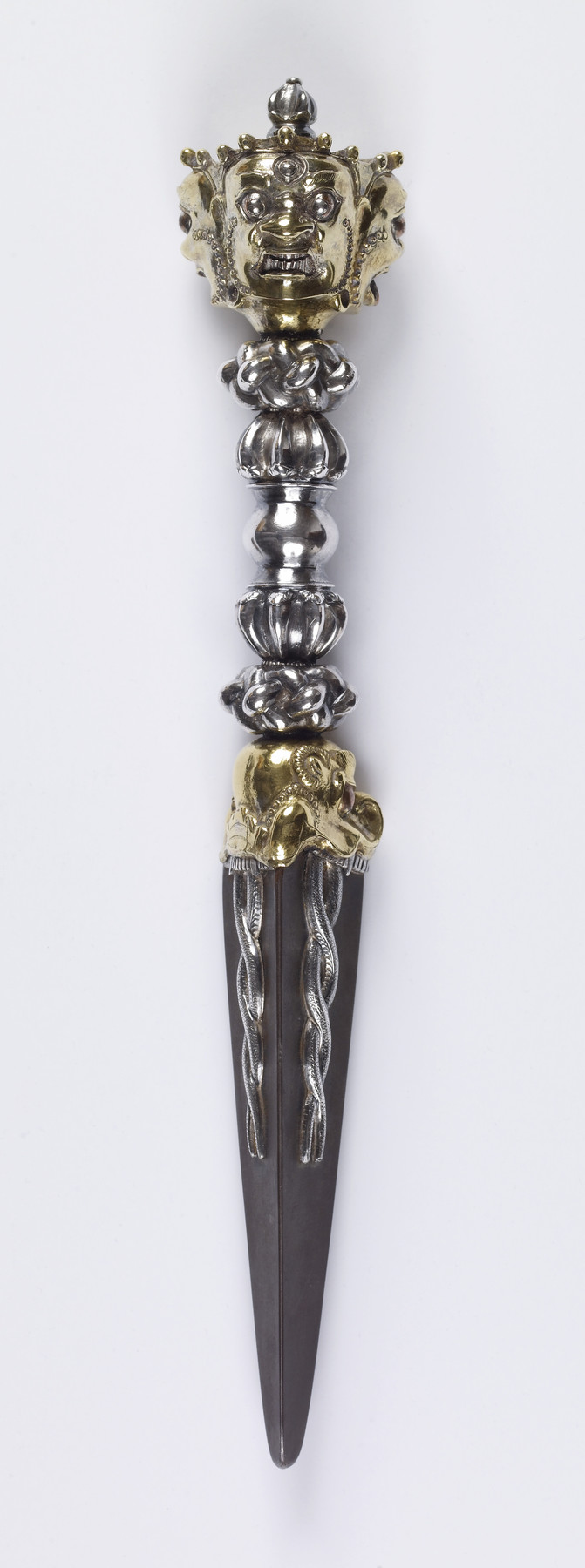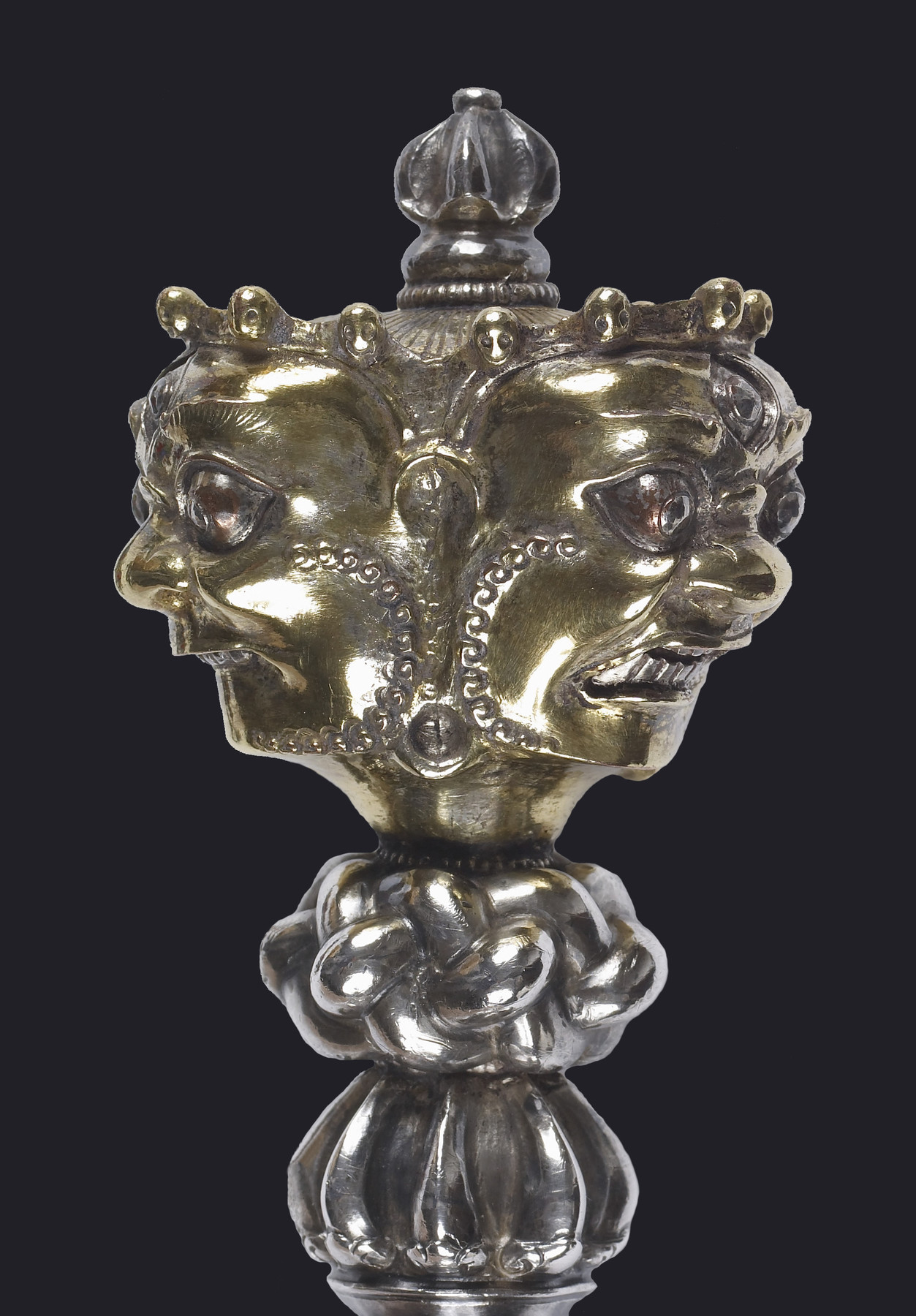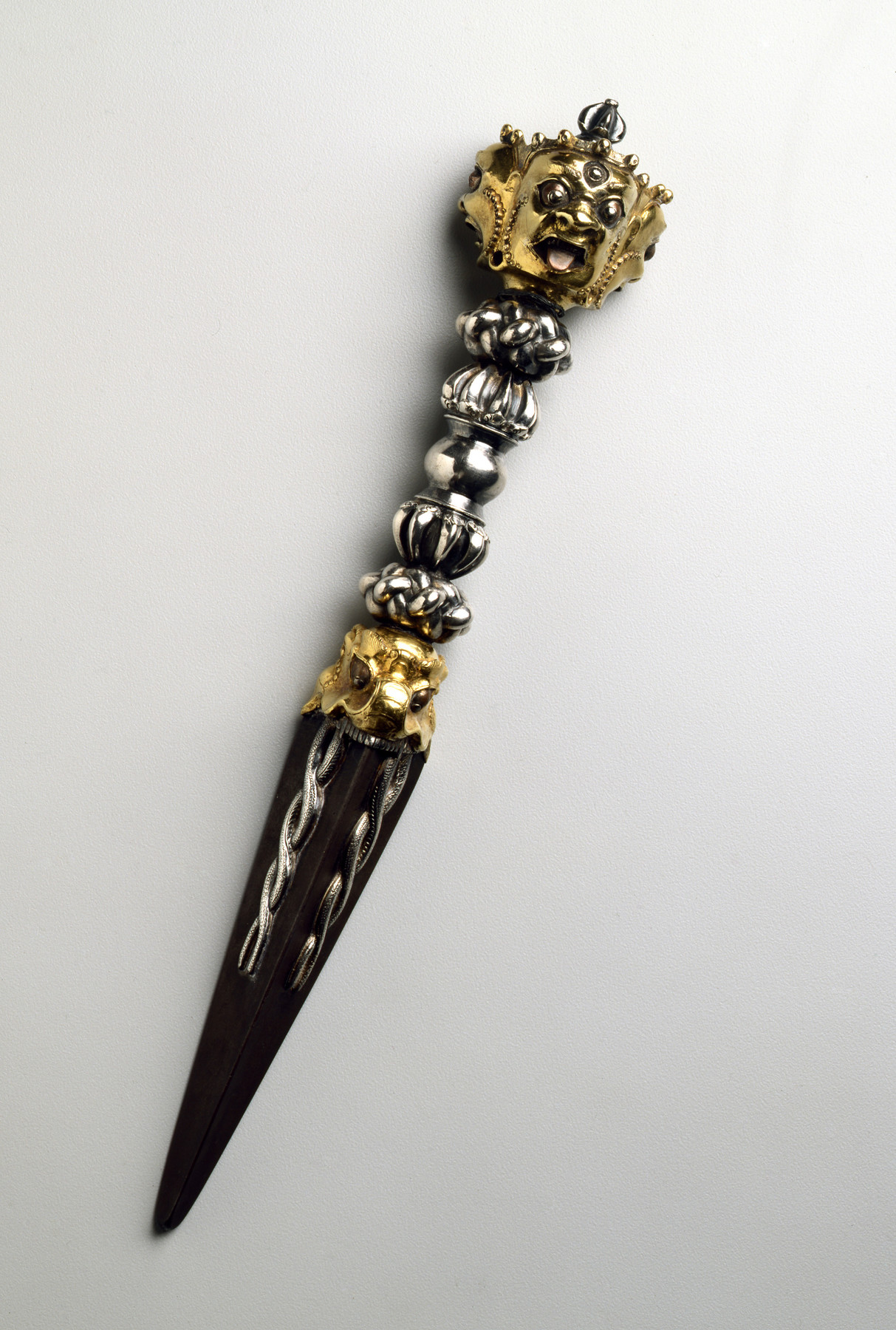Ritual Dagger
(India, Nepal, and Tibet)
Originally the "phur-bu" was probably a simple peg used to secure tent ropes to the ground. No doubt the ability of the peg to pierce gave rise to the expression, "kilaya kilaya," (pierce, pierce) often a component of tantric mantras along with "han han," (destroy, destroy) or "maraya maraya," (kill, kill). The objects of destruction are, of course, enemies of the faith, evil forces, as well as psychic demons.
This example, typically Tibetan in form, is particularly handsome and visually powerful. It has a three-sided iron blade adorned with silver intertwined serpents and a golden "makara" (mythical aquatic creature) guarding the joint of the hilt and the blade. Then, a silver thunderbolt with sixteen prongs has two knots of immutability at the two ends. The finial has three wrathful heads with open mouths and hanging tongues crowned by prongs of yet another thunderbolt. The square faces of the deity are particularly expressive, with their strongly molded features and a rich interplay of gilding, silver inlay, and lightly applied pigments.
Provenance
Provenance (from the French provenir, 'to come from/forth') is the chronology of the ownership, custody, or location of a historical object. Learn more about provenance at the Walters.
John and Berthe Ford, Baltimore; given to Walters Art Museum, 2002.
Conservation
| Date | Description | Narrative |
|---|---|---|
| 1/6/2017 | Examination | Examined for exhibition. |
Geographies
Tibet (Place of Origin)
Measurements
L: 13 × W: 2 5/16 × D: 2 5/16 in. (33 × 5.8 × 5.8 cm)
Credit Line
Gift of John and Berthe Ford, 2002
Accession Number
In libraries, galleries, museums, and archives, an accession number is a unique identifier assigned to each object in the collection.
In libraries, galleries, museums, and archives, an accession number is a unique identifier assigned to each object in the collection.
52.311










